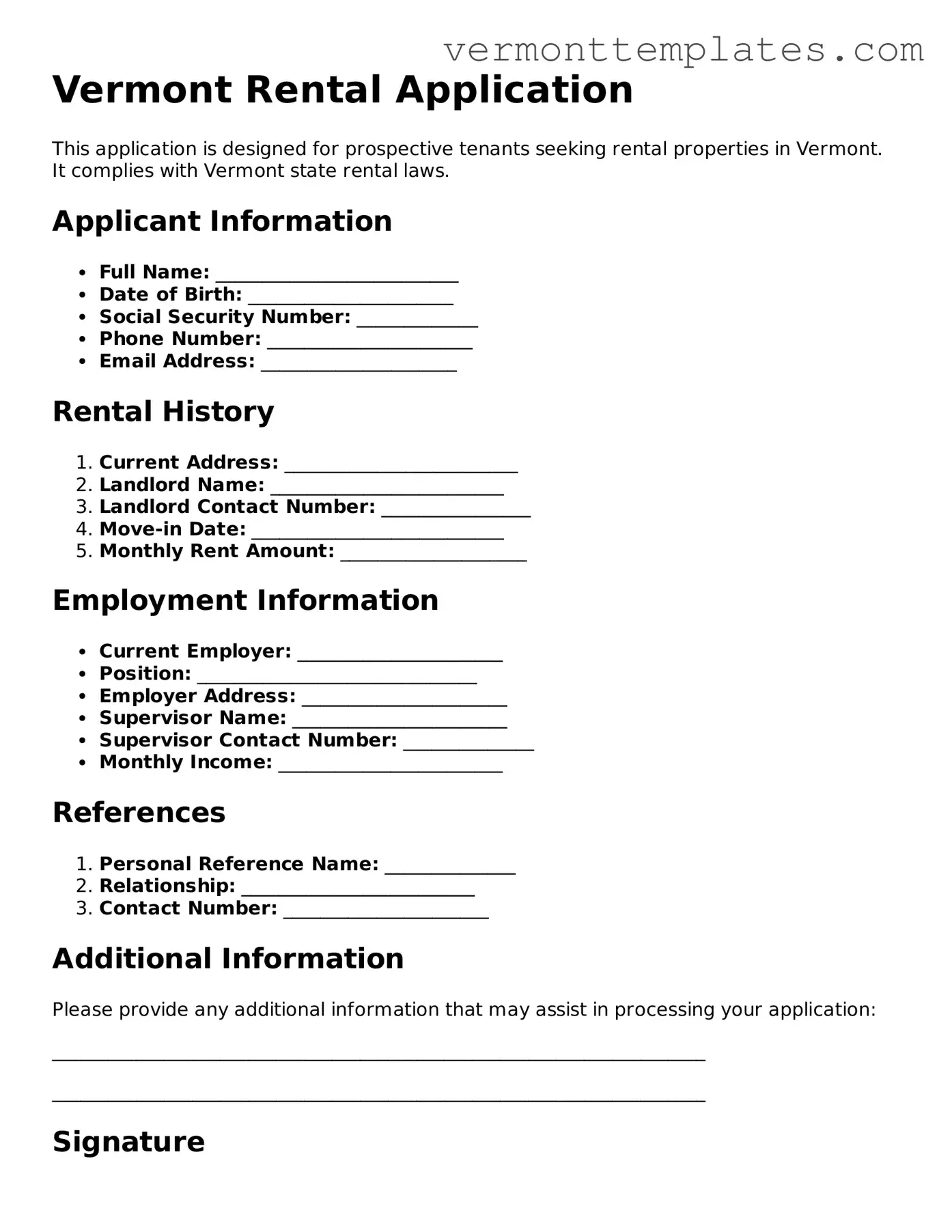The Vermont Rental Application form shares similarities with the standard Rental Application commonly used across the United States. Both documents serve the same purpose: to gather essential information from prospective tenants. They typically require personal details such as name, contact information, employment history, and rental history. Additionally, both forms often include sections for references and may request consent for background checks, making them vital tools for landlords in assessing potential tenants.
Another document that resembles the Vermont Rental Application is the Tenant Screening Form. This form focuses specifically on gathering information necessary for conducting background checks. While the Rental Application provides a broader overview of the applicant's qualifications, the Tenant Screening Form hones in on credit history, criminal background, and rental payment history. Both documents aim to help landlords make informed decisions, but the Tenant Screening Form is more specialized.
When preparing for the sale of an RV in Texas, it is essential to use a proper legal document that facilitates the transfer of ownership, such as the Texas RV Bill of Sale form. This crucial document not only serves as proof of purchase but also outlines the specifics of the transaction between the buyer and seller, ensuring a transparent process. For additional information and resources related to creating this document, you can visit TopTemplates.info, which provides useful templates and guidance.
The Lease Agreement is another document that parallels the Vermont Rental Application in its purpose and content. While the Rental Application is used to evaluate potential tenants, the Lease Agreement formalizes the rental relationship once a tenant is selected. Both documents require personal information and may include terms related to rental payments, duration of tenancy, and responsibilities of both parties. They work together to establish a clear understanding between landlords and tenants.
The Rental Reference Form is similar to the Vermont Rental Application in that it seeks to verify the information provided by the applicant. This form typically requests contact information for previous landlords or references who can vouch for the tenant's reliability and behavior. While the Rental Application collects this information upfront, the Rental Reference Form is often used later in the process to confirm the applicant's suitability.
The Employment Verification Form also bears resemblance to the Vermont Rental Application. This document focuses specifically on confirming the applicant's employment status and income. While the Rental Application may ask for employment details, the Employment Verification Form is typically filled out by the employer to provide official confirmation. Both forms help landlords assess the financial stability of potential tenants.
Finally, the Personal Financial Statement is akin to the Vermont Rental Application in that it provides insight into the applicant's financial situation. This document outlines income, expenses, assets, and liabilities, giving landlords a clearer picture of the tenant's ability to meet rental obligations. While the Rental Application may ask for basic income information, the Personal Financial Statement offers a more detailed financial overview.
